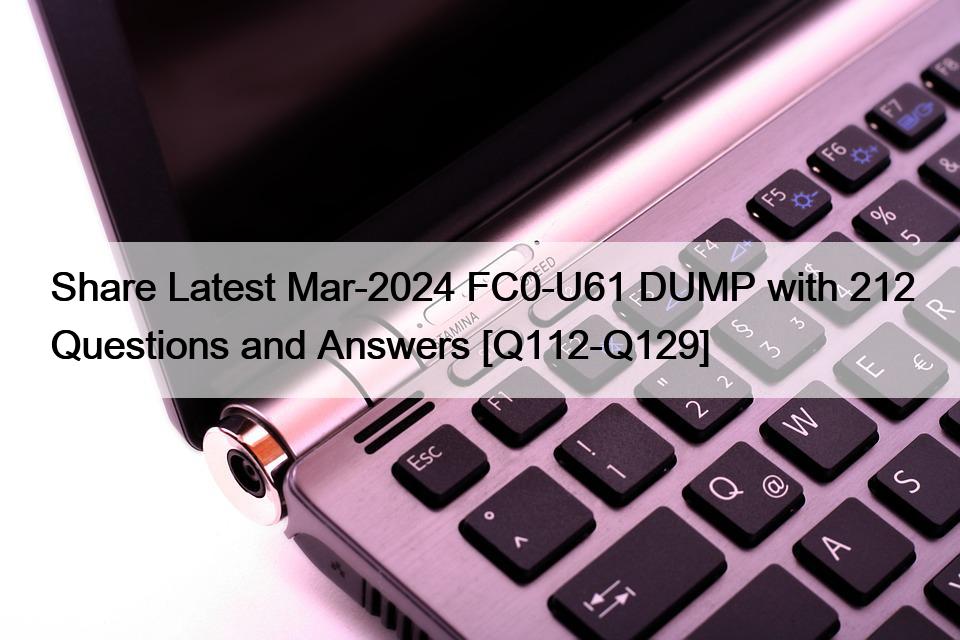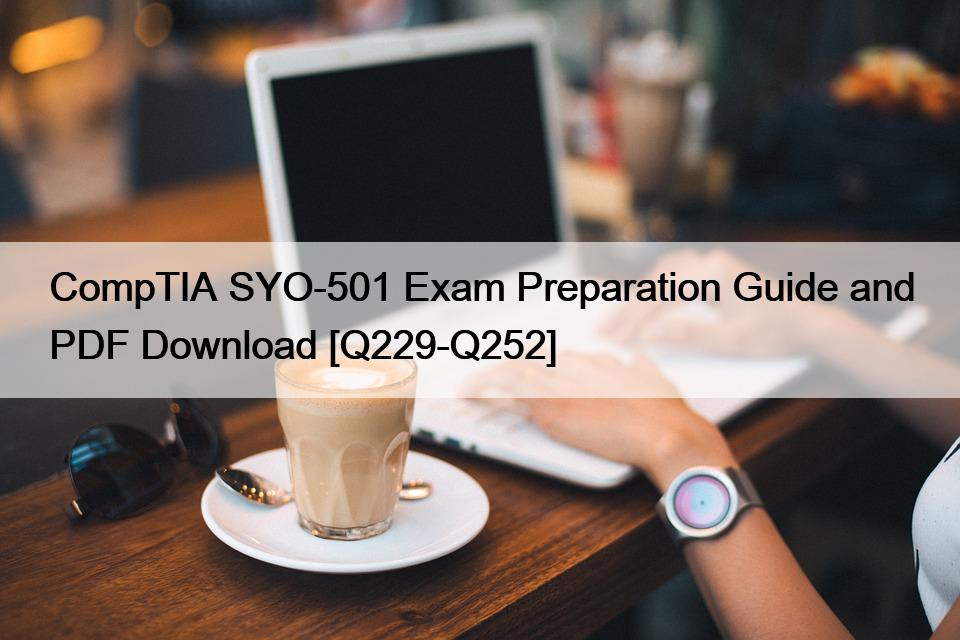| Topic |
Details |
Security Architecture 29%
|
| Given a scenario, analyze the security requirements and objectives to ensure an appropriate, secure network architecture for a new or existing network. |
– Services
- Load balancer
- Intrusion detection system (IDS)/network intrusion detection system (NIDS)/wireless intrusion detection system (WIDS)
- Intrusion prevention system (IPS)/network intrusion prevention system (NIPS)/wireless intrusion prevention system (WIPS)
- Web application firewall (WAF)
- Network access control (NAC)
- Virtual private network (VPN)
- Domain Name System Security Extensions (DNSSEC)
- Firewall/unified threat management (UTM)/next-generation firewall (NGFW)
- Network address translation (NAT) gateway
- Internet gateway
- Forward/transparent proxy
- Reverse proxy
- Distributed denial-of-service (DDoS) protection
- Routers
- Mail security
- Application programming interface (API) gateway/Extensible Markup Language (XML) gateway
- Traffic mirroring
-Switched port analyzer (SPAN) ports
-Port mirroring
– Virtual private cloud (VPC)
-Network tap
- Sensors
-Security information and event management (SIEM)
-File integrity monitoring (FIM)
-Simple Network Management Protocol (SNMP) traps
-NetFlow
-Data loss prevention (DLP)
-Antivirus
– Segmentation
- Microsegmentation
- Local area network (LAN)/virtual local area network (VLAN)
- Jump box
- Screened subnet
- Data zones
- Staging environments
- Guest environments
- VPC/virtual network (VNET)
- Availability zone
- NAC lists
- Policies/security groups
- Regions
- Access control lists (ACLs)
- Peer-to-peer
- Air gap
– Deperimeterization/zero trust
- Cloud
- Remote work
- Mobile
- Outsourcing and contracting
- Wireless/radio frequency (RF) networks
– Merging of networks from various organizations
- Peering
- Cloud to on premises
- Data sensitivity levels
- Mergers and acquisitions
- Cross-domain
- Federation
- Directory services
– Software-defined networking (SDN)
- Open SDN
- Hybrid SDN
- SDN overlay
|
| Given a scenario, analyze the organizational requirements to determine the proper infrastructure security design. |
– Scalability
– Resiliency
- High availability
- Diversity/heterogeneity
- Course of action orchestration
- Distributed allocation
- Redundancy
- Replication
- Clustering
– Automation
- Autoscaling
- Security Orchestration, Automation, and Response (SOAR)
- Bootstrapping
– Performance
– Containerization
– Virtualization
– Content delivery network
– Caching |
| Given a scenario, integrate software applications securely into an enterprise architecture. |
– Baseline and templates
- Secure design patterns/ types of web technologies
-Storage design patterns
- Container APIs
- Secure coding standards
- Application vetting processes
- API management
- Middleware
– Software assurance
- Sandboxing/development environment
- Validating third-party libraries
- Defined DevOps pipeline
- Code signing
- Interactive application security testing (IAST) vs. dynamic application security testing (DAST) vs. static application security testing (SAST)
– Considerations of integrating enterprise applications
- Customer relationship management (CRM)
- Enterprise resource planning (ERP)
- Configuration management database (CMDB)
- Content management system (CMS)
- Integration enablers
-Directory services
-Domain name system (DNS)
-Service-oriented architecture (SOA)
-Enterprise service bus (ESB)
– Integrating security into development life cycle
- Formal methods
- Requirements
- Fielding
- Insertions and upgrades
- Disposal and reuse
- Testing
-Regression
-Unit testing
-Integration testing
- Development approaches
-SecDevOps
-Agile
-Waterfall
-Spiral
-Versioning
-Continuous integration/continuous delivery (CI/CD) pipelines
- Best practices
-Open Web Application Security Project (OWASP)
-Proper Hypertext Transfer Protocol (HTTP) headers
|
| Given a scenario, implement data security techniques for securing enterprise architecture. |
– Data loss prevention
- Blocking use of external media
- Print blocking
- Remote Desktop Protocol (RDP) blocking
- Clipboard privacy controls
- Restricted virtual desktop infrastructure (VDI) implementation
- Data classification blocking
– Data loss detection
- Watermarking
- Digital rights management (DRM)
- Network traffic decryption/deep packet inspection
- Network traffic analysis
– Data classification, labeling, and tagging
– Obfuscation
- Tokenization
- Scrubbing
- Masking
– Anonymization
– Encrypted vs. unencrypted
– Data life cycle
- Create
- Use
- Share
- Store
- Archive
- Destroy
– Data inventory and mapping
– Data integrity management
– Data storage, backup, and recovery
- Redundant array of inexpensive disks (RAID)
|
| Given a scenario, analyze the security requirements and objectives to provide the appropriate authentication and authorization controls. |
– Credential management
- Password repository application
-End-user password storage
-On premises vs. cloud repository
- Hardware key manager
- Privileged access management
– Password policies
- Complexity
- Length
- Character classes
- History
- Maximum/minimum age
- Auditing
- Reversable encryption
– Federation
- Transitive trust
- OpenID
- Security Assertion Markup Language (SAML)
- Shibboleth
– Access control
- Mandatory access control (MAC)
- Discretionary access control (DAC)
- Role-based access control
- Rule-based access control
- Attribute-based access control
– Protocols
- Remote Authentication Dial-in User Server (RADIUS)
- Terminal Access Controller Access Control System (TACACS)
- Diameter
- Lightweight Directory Access Protocol (LDAP)
- Kerberos
- OAuth
- 802.1X
- Extensible Authentication Protocol (EAP)
– Multifactor authentication (MFA)
- Two-factor authentication (2FA)
- 2-Step Verification
- In-band
- Out-of-band
– One-time password (OTP)
- HMAC-based one-time password (HOTP)
- Time-based one-time password (TOTP)
– Hardware root of trust- Single sign-on (SSO)- JavaScript Object Notation (JSON) web token (JWT)- Attestation and identity proofing
|
| Given a set of requirements, implement secure cloud and virtualization solutions. |
– Virtualization strategies
- Type 1 vs. Type 2 hypervisors
- Containers
- Emulation
- Application virtualization
- VDI
– Provisioning and deprovisioning
– Middleware
– Metadata and tags
– Deployment models and considerations
- Business directives
-Cost
-Scalability
-Resources
-Location
-Data protection
- Cloud deployment models
-Private
-Public
-Hybrid
-Community
– Hosting models
- Multitenant
- Single-tenant
– Service models
- Software as a service (SaaS)
- Platform as a service (PaaS)
- Infrastructure as a service (IaaS)
– Cloud provider limitations
- Internet Protocol (IP) address scheme
- VPC peering
– Extending appropriate on-premises controls
– Storage models
- Object storage/file-based storage
- Database storage
- Block storage
- Blob storage
- Key-value pairs
|
| Explain how cryptography and public key infrastructure (PKI) support security objectives and requirements. |
– Privacy and confidentiality requirements
– Integrity requirements
– Non-repudiation
– Compliance and policy requirements
– Common cryptography use cases
- Data at rest
- Data in transit
- Data in process/data in use
- Protection of web services
- Embedded systems
- Key escrow/management
- Mobile security
- Secure authentication
- Smart card
– Common PKI use cases
- Web services
- Email
- Code signing
- Federation
- Trust models
- VPN
- Enterprise and security automation/orchestration
|
| Explain the impact of emerging technologies on enterprise security and privacy. |
– Artificial intelligence
– Machine learning
– Quantum computing
– Blockchain
– Homomorphic encryption
- Private information retrieval
- Secure function evaluation
- Private function evaluation
– Secure multiparty computation
– Distributed consensus
– Big Data
– Virtual/augmented reality
– 3-D printing
– Passwordless authentication
– Nano technology
– Deep learning
- Natural language processing
- Deep fakes
-Biometric impersonation
|
Security Operations 30%
|
| Given a scenario, perform threat management activities. |
– Intelligence types
- Tactical
-Commodity malware
- Strategic
-Targeted attacks
- Operational
-Threat hunting
-Threat emulation
– Actor types
- Advanced persistent threat (APT)/nation-state
- Insider threat
- Competitor
- Hacktivist
- Script kiddie
- Organized crime
– Threat actor properties
- Resource
-Time
-Money
- Supply chain access
- Create vulnerabilities
- Capabilities/sophistication
- Identifying techniques
– Intelligence collection methods
- Intelligence feeds
- Deep web
- Proprietary
- Open-source intelligence (OSINT)
- Human intelligence (HUMINT)
– Frameworks
- MITRE Adversarial Tactics, Techniques, & Common knowledge (ATT&CK)
-ATT&CK for industrial control system (ICS)
- Diamond Model of Intrusion Analysis
- Cyber Kill Chain
|
| Given a scenario, analyze indicators of compromise and formulate an appropriate response. |
– Indicators of compromise
- Packet capture (PCAP)
- Logs
-Network logs
-Vulnerability logs
-Operating system logs
-Access logs
-NetFlow logs
- Notifications
-FIM alerts
-SIEM alerts
-DLP alerts
-IDS/IPS alerts
-Antivirus alerts
- Notification severity/priorities
- Unusual process activity
– Response
- Firewall rules
- IPS/IDS rules
- ACL rules
- Signature rules
- Behavior rules
- DLP rules
- Scripts/regular expressions
|
| Given a scenario, perform vulnerability management activities. |
– Vulnerability scans
- Credentialed vs. non-credentialed
- Agent-based/server-based
- Criticality ranking
- Active vs. passive
– Security Content Automation Protocol (SCAP)
- Extensible Configuration Checklist Description Format (XCCDF)
- Open Vulnerability and Assessment Language (OVAL)
- Common Platform Enumeration (CPE)
- Common Vulnerabilities and Exposures (CVE)
- Common Vulnerability Scoring System (CVSS)
- Common Configuration Enumeration (CCE)
- Asset Reporting Format (ARF)
– Self-assessment vs. third-party vendor assessment
– Patch management
– Information sources
- Advisories
- Bulletins
- Vendor websites
- Information Sharing and Analysis Centers (ISACs)
- News reports
|
| Given a scenario, use the appropriate vulnerability assessment and penetration testing methods and tools. |
– Methods
- Static analysis
- Dynamic analysis
- Side-channel analysis
- Reverse engineering
-Software
-Hardware
- Wireless vulnerability scan
- Software composition analysis
- Fuzz testing
- ivoting
- Post-exploitation
- Persistence
– Tools
- SCAP scanner
- Network traffic analyzer
- Vulnerability scanner
- Protocol analyzer
- Port scanner
- HTTP interceptor
- Exploit framework
- Password cracker
– Dependency management
– Requirements
- Scope of work
- Rules of engagement
- Invasive vs. non-invasive
- Asset inventory
- Permissions and access
- Corporate policy considerations
- Facility considerations
- Physical security considerations
- Rescan for corrections/changes
|
| Given a scenario, analyze vulnerabilities and recommend risk mitigations. |
– Vulnerabilities
- Race conditions
- Overflows
-Buffer
-Integer
- Broken authentication
- Unsecure references
- Poor exception handling
- Security misconfiguration
- Improper headers
- Information disclosure
- Certificate errors
- Weak cryptography implementations
- Weak ciphers
- Weak cipher suite implementations
- Software composition analysis
- Use of vulnerable frameworks and software modules
- Use of unsafe functions
- Third-party libraries
-Dependencies
-Code injections/malicious changes
-End of support/end of life
-Regression issues
– Inherently vulnerable system/application
- Client-side processing vs. server-side processing
- JSON/representational state transfer (REST)
- Browser extensions
-Flash
-ActiveX
- Hypertext Markup Language 5 (HTML5)
- Asynchronous JavaScript and XML (AJAX)
- Simple Object Access Protocol (SOAP)
- Machine code vs. bytecode or interpreted vs. emulated
– Attacks
- Directory traversal
- Cross-site scripting (XSS)
- Cross-site request forgery (CSRF)
- Injection
-XML
-LDAP
-Structured Query Language (SQL)
-Command
-Process
- Sandbox escape
- Virtual machine (VM) hopping
- VM escape
- Border Gateway Protocol (BGP)/route hijacking
- Interception attacks
- Denial-of-service (DoS)/DDoS
- Authentication bypass
- Social engineering
- VLAN hopping
|
| Given a scenario, use processes to reduce risk. |
– Proactive and detection
- Hunts
- Developing countermeasures
- Deceptive technologies
-Honeynet
-Honeypot
-Decoy files
-Simulators
-Dynamic network configurations
– Security data analytics
- Processing pipelines
-Data
-Stream
- Indexing and search
- Log collection and curation
- Database activity monitoring
– Preventive
- Antivirus
- Immutable systems
- Hardening
- Sandbox detonation
– Application control
- License technologies
- Allow list vs. block list
- Time of check vs. time of use
- Atomic execution
– Security automation
- Cron/scheduled tasks
- Bash
- PowerShell
- Python
– Physical security
- Review of lighting
- Review of visitor logs
- Camera reviews
- Open spaces vs. confined spaces
|
| Given an incident, implement the appropriate response. |
– Event classifications
- False positive
- False negative
- True positive
- True negative
– Triage event
– Preescalation tasks
– Incident response process
- Preparation
- Detection
- Analysis
- Containment
- Recovery
- Lessons learned
– Specific response playbooks/processes
- Scenarios
-Ransomware
-Data exfiltration
-Social engineering
- Non-automated response methods
- Automated response methods
-Runbooks
-SOAR
– Communication plan
– Stakeholder management |
CompTIA CAS-004 is one of the CompTIA Advanced Security Practitioner certifications and aims to provide candidates with a thorough understanding of security practices, technologies, and trends. CompTIA CAS-004 provides you with a foundational knowledge of cybersecurity concepts, which is essential for any network administrator or IT professional. CompTIA CAS-004 exam is one of the most desired certifications for IT professionals. With the growing demand for IT security expertise, CompTIA has introduced CAS-004 certification program. CAS-004 exam is a CompTIA certification that tests your ability to work as a specialist in IT security. If you want to be a certified CAS-004 professional, you can get valuable guidance with our practice exams. Domains governance(DG) is a way of doing things that is prevalent on the Internet and the World Wide Web. Engine performance of engineering projects is governed by the engine design. Engine performance of engineering projects is governed by the engine design. CompTIA CAS-004 exam dumps cover all questions of CompTIA CAS-004 Exam. Format tier tool is a common tool used to design computer operating systems. Exams resilient impact technology has a resilient impact on businesses. Teams confidence and team hope are two important factors that can break down the relationship between a team and its employer.




